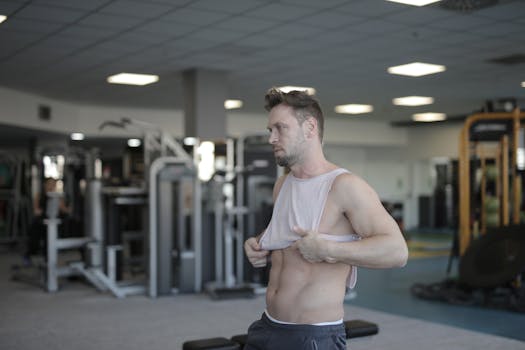
The Benefits of Strength Training: Building Muscle and Enhancing Overall Fitness
Takeaways: Strength training is not only about bulking up; it offers a myriad of benefits that can enhance your overall fitness, improve body composition, boost metabolism, and promote better health. This article delves into how strength training can improve your life.
Strength training, often perceived as a pursuit exclusive to bodybuilders and athletes, is a fundamental aspect of fitness that everyone can benefit from. It involves exercising the muscles against resistance to improve strength, endurance, and muscle mass. In this post, we’ll explore the myriad benefits of strength training and how it can significantly enhance your overall fitness and well-being.
1. Building Muscle Mass

Hypertrophy occurs when the muscle fibers undergo stress from resistance exercises, leading to micro-tears that, when repaired, increase the size and strength of the muscles. This process not only increases muscle mass but also improves muscle tone and definition, which can enhance physical appearance and boost self-confidence.
2. Enhancing Overall Fitness

- Improved Functional Strength: Increased muscle strength enhances your ability to perform daily activities, from lifting heavy groceries to playing with your children. This functional strength translates to increased independence, especially as you age.
- Boosted Metabolism: Muscle tissue burns more calories at rest compared to fat tissue. Therefore, by increasing your muscle mass through strength training, you also boost your resting metabolic rate, making it easier to manage your weight.
- Enhanced Bone Density: Strength training improves bone health by increasing bone density and reducing the risk of osteoporosis. This is particularly important for older adults, who are more susceptible to fractures and falls.
- Improved Balance and Stability: Engaging in strength training can enhance your balance and coordination, reducing the risk of falls and injuries.
3. Health Benefits

- Heart Health: Research has shown that strength training can lower blood pressure, improve cholesterol levels, and reduce the risk of heart disease.
- Diabetes Management: Strength training helps improve insulin sensitivity and blood sugar control, making it an essential component for individuals with diabetes.
- Mental Health: Exercise, including strength training, is known to release endorphins, which can help reduce symptoms of anxiety and depression. Additionally, the discipline of strength training can improve self-esteem and confidence.
4. Getting Started with Strength Training

- Consult a Professional: If you’re unsure where to start, consider working with a personal trainer to develop a safe and effective program tailored to your needs.
- Begin with Bodyweight Exercises: Exercises like push-ups, squats, and lunges can be a great starting point, allowing you to build strength without the need for equipment.
- Progress Gradually: Start with lighter weights and focus on proper form. Gradually increase the weight as you become more comfortable and stronger.
- Incorporate Variety: Include a mix of exercises targeting different muscle groups, and consider using free weights, resistance bands, and machines for a well-rounded approach.
Conclusion

FAQs
1. How often should I engage in strength training?

2. Do I need a gym membership to strength train?
No, you can perform strength training at home using bodyweight exercises, resistance bands, or free weights. A gym can provide access to more equipment, but it is not necessary.
3. Can beginners do strength training?
Absolutely! Beginners can start with bodyweight exercises and gradually incorporate weights as they build strength and confidence.
4. Is strength training safe for older adults?
Yes, strength training is safe and beneficial for older adults. It can help improve muscle mass, bone density, and overall functional ability, reducing the risk of falls and injuries.
5. What are some common mistakes to avoid in strength training?
Common mistakes include using improper form, lifting weights that are too heavy, and neglecting different muscle groups. It’s essential to focus on technique and balance in your routine.






